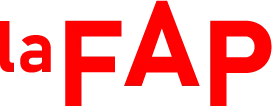There are three of workers status in Belgium:
- Employed;
- Self-employed;
- Civil servant.
The term "art workers status" is therefore not a fourth status, but rather a common term used to refer to special rules in terms of unemployment rules that recognises and protects artists in the exercise of their creative profession by guaranteeing them continuity of income. The workers in the arts sector can operate under the first two status.
Being self-employed
A self-employed artist is an artist who carries out their professional artistic activity under the status of a self-employed worker. In other words, the artist carries out their professional activity on his or her own account and without being bound by an employment contract or civil servant status. They are paid when they address an invoice to their customers. They must:
- join a social office and pay social security contributions (min. €750/quarter regardless of your income. A deduction is possible for the first few quarters);
- register for VAT and file quarterly returns (unless you have an exemption);
- apply for a company number (BCE > link) ;
- open a "business" bank account, from which to pay all your business expenses and receive payments;
- prove your basic management skills.
NB. Self-employed workers cannot receive compensation or any other substitute income if they are unemployed.
Complementary self-employed status
A complementary self-employed person carries out his professional activities under two distinct statues:
- employee / civil servant on the one hand ;
- complementary self-employed on the other.
This second activity, as its name suggests, is complementary to the first (main activity as an employee or civil servant). The salaried activity must be carried out at least half-time (19 hours a week) and they must:
- join a social office and pay social security contributions every 3 months (min. €70 / quarter regardless of income);
- be register for VAT and file quarterly returns (unless you have an exemption scheme);
- apply for a company number;
- open a business bank account.
As an exception to the principle set out above, artists receiving unemployment benefit may carry out their artistic activity under the status of complementary self-employed person, but:
- they must inform the ONEM of this activity using the "C1 Artist" form;
- the amount of unemployment benefit will not be affected by the additional self-employed activity as long as the income from this activity does not exceed €10217.30 net / year (indexable);
NB. Those incomes will not be taken into account to obtain or maintain Art Workers Status.
Being an employee
Salaried artists carry out their professional (artistic) activity under an employment contract, which means:
- a relationship of subordination with an employer;
- a remuneration that depends on the time worked and the Joint Commission.
NB. In Belgium, the basic full-time corresponds to 7.6 hours a day or 38 hours a week.
How To Get Paid?
Billing for services
When the remuneration is the consideration for a service provided in a self-employed capacity on a principal or complementary basis.
Calculation:
Gross income
- actual expenses or flat-rate professional expenses
- average tax rate determined on the basis of other taxable professional income (e.g. salary, profits, etc.)
= net income
Work contracts
When the remuneration is for a salaried work under an employment contract.
Calculation:
Gross income
- employer's contributions (between 23% and 25%)
- employee contributions (13.07%)
- actual or flat-rate business expenses
- tax (rate varies according to other income, personal situation and residence)
= net income
1st BIS contrat
When the remuneration is the consideration for an artistic service provided under a commission and outside the scope of an employment contract. The same deductions apply as for an employment contract plus the commission from the Bureau Social for Artists (BSA). To enter into this type of contract, it is necessary to obtain the Art Workers Attestation beforehand.
Calculation:
Gross income
- Employers' contributions (between 23 and 25%)
- Employee contributions (13.07%)
- BSA commission
- Actual or flat-rate business expenses tax (rate varies depending on other income, personal situation and residence)
= net income
Copyright licence agreement
When the remuneration is the consideration for an authorisation to use a work.
Calculation:
Gross income
- Statutory fixed expenses (50%) or actual expenses
- Withholding tax (15%)
= net income
Occasional Service Note
When the remuneration is for a service provided on an exceptional basis, outside the professional activities and up to €5,000 per year.
Occasional services include, for example, people who have another professional activity as their main occupation or who are creating something for the first time. For example, a lawyer who decides to write a novel, even if it is a huge success, or a comic strip artist who writes a film script or makes a documentary.
The resulting income is considered to be miscellaneous income from occasional services.
NB: if you receive miscellaneous income, you do not need a company number, are not liable for VAT and do not have self-employed status.
Calculation:
Gross income
- actual expenses
- 33% (flat-rate tax)
= net income


